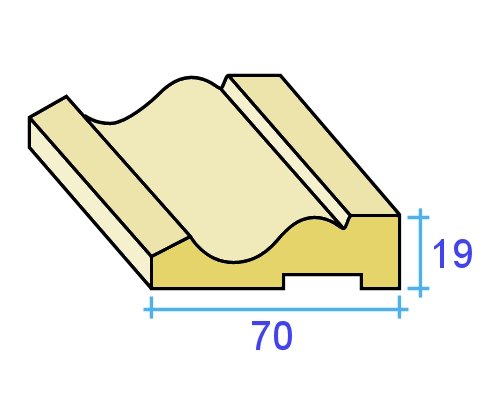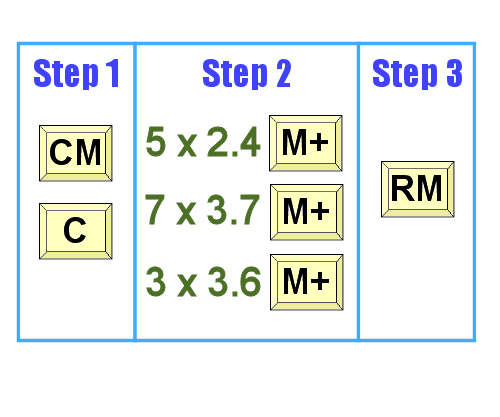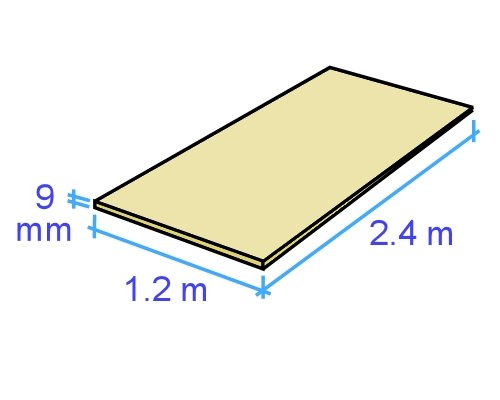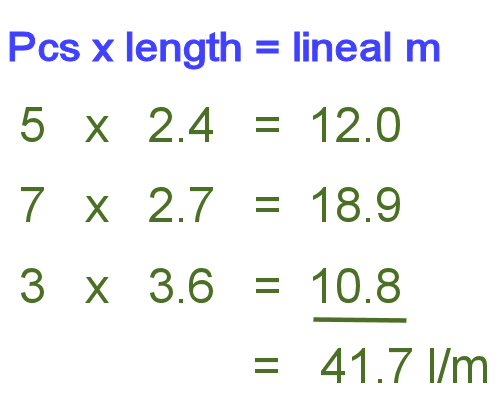Using tallies
 Audio for slide 2 (mp3 |6|KB)
Audio for slide 2 (mp3 |6|KB)
Set out below are some examples of how to record tallies when you're working with items that are referred to by their cross sectional dimensions.

 Audio for slide 3 (mp3 |6|KB)
Audio for slide 3 (mp3 |6|KB)
Example 1: skirting boards
Let's say you have 15 pieces of skirting board, 70 mm x 19 mm in size.
We'll say that 5 pieces are 2.4 metres in length, 7 pieces are 2.7 metres and 3 pieces are 3.6 metres.
To show this as a tally, you would write it as follows:
70 x 19 skirting: 5/2.4, 7/2.7, 3/3.6
Now let's say we wanted to know how many lineal metres this tally represents.
Note that 'lineal' means 'in a line' - so to put the question another way: What is the total metreage of these pieces if they were all laid out in a line?

 Audio for slide 4 (mp3 |6|KB)
Audio for slide 4 (mp3 |6|KB)
The easiest way to find the answer is to use a calculator with a memory button. Although not all calculators work in exactly the same way, the sequence of numbers and function buttons would be similar to that shown in the image.
To see this process written out in more detail, click on the link below.
Detailed description of calculation

 Audio for slide 6 (mp3 |6|KB)
Audio for slide 6 (mp3 |6|KB)
Example 2: plywood sheets
Sheet materials sometimes have their dimensions shown in metres and sometimes in millimetres.
For example, if you had two sheets of ply that were 9 mm thick, 2.4 metres long and 1.2 metres wide, it could be written up as follows:
9 mm ply: 2 / 2.4 x 1.2
or alternatively:
9 mm ply: 2 / 2400 x 1200


Learning activity
Audio 7 (mp3 |6|KB)How many lineal metres (l/m) are in the following bundle of aluminium angle lengths? Enter your answer into the cell, and click on the 'Check your answer' button to see if you were right.

| 19 x 12 aluminium angle: 5/3.0, 3/2.4, 2/1.8 | 25.8 | lineal metres |






